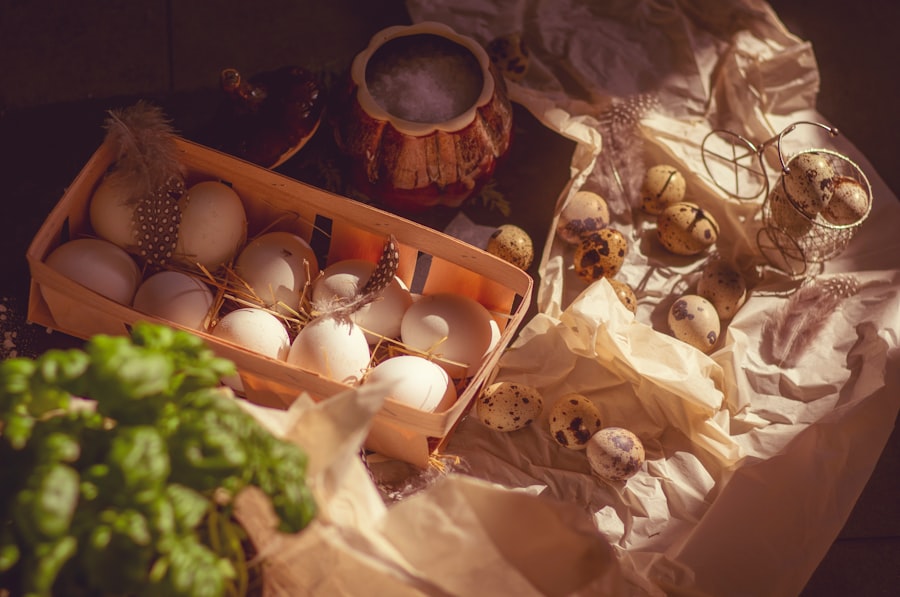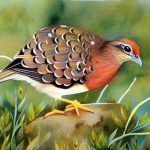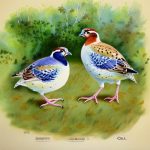Breeding quails can be a rewarding and profitable venture for those interested in poultry farming. Quails are small, easy to care for, and can be raised in a relatively small space, making them an ideal choice for hobbyists and commercial breeders alike. A quail aviary is a dedicated space for breeding and raising quails, providing them with the ideal environment for reproduction and growth. Whether you are looking to start a small-scale quail breeding operation or simply want to raise quails for personal consumption, setting up a quail aviary is the first step towards successful breeding.
Quail aviaries can be set up in a variety of ways, depending on the scale of the operation and the specific needs of the quails. From small backyard setups to larger commercial operations, the key to a successful quail aviary lies in providing the birds with a comfortable and safe environment that meets their specific requirements. In this article, we will explore the essential steps for setting up a quail aviary, selecting breeding stock, the breeding and incubation process, caring for quail chicks, managing the aviary, and tips for successful breeding.
Table of Contents
Key Takeaways
- Breeding quails can be a rewarding and profitable venture for poultry enthusiasts.
- Setting up a quail aviary requires careful consideration of space, ventilation, and nesting areas.
- Selecting healthy and productive breeding stock is crucial for successful quail breeding.
- The breeding and incubation process involves providing the right conditions for egg laying and hatching.
- Caring for quail chicks involves providing warmth, proper nutrition, and a clean environment for their growth and development.
- Managing the quail aviary includes regular cleaning, monitoring for diseases, and ensuring the overall well-being of the quail flock.
- Tips for successful breeding include maintaining a balanced diet, providing adequate lighting, and minimizing stress in the quail aviary.
Setting Up the Quail Aviary
When setting up a quail aviary, it is important to consider the space, housing, and equipment needed to ensure the well-being and productivity of the birds. The first step is to choose a suitable location for the aviary. It should be away from potential predators, have good drainage, and provide protection from extreme weather conditions. The size of the aviary will depend on the number of quails you plan to breed, but as a general rule of thumb, each bird should have at least 1 square foot of space.
Next, you will need to construct or purchase suitable housing for the quails. This can range from simple wire cages to more elaborate hutches or coops, depending on your preferences and the number of birds you plan to keep. The housing should provide protection from predators, adequate ventilation, and easy access for feeding and cleaning. Additionally, you will need to provide nesting boxes for the quails to lay their eggs and privacy for breeding pairs.
In terms of equipment, you will need feeders and waterers designed specifically for quails, as well as heating lamps or pads to maintain the ideal temperature in the aviary. It is also important to provide suitable bedding material, such as straw or wood shavings, to keep the birds comfortable and maintain cleanliness. Finally, ensure that the aviary is secure and predator-proof, with proper fencing and netting to prevent escapes and attacks.
Selecting Breeding Stock
Selecting the right breeding stock is crucial for successful quail breeding. When choosing breeding birds, look for healthy, active individuals with good body conformation and temperament. It is important to select birds from reputable sources to ensure genetic diversity and avoid inbreeding. Additionally, consider the specific breed or variety of quail you want to breed, as different breeds have different characteristics and requirements.
When selecting breeding stock, it is important to consider both male and female birds. Look for hens that are good egg layers and have a history of successful brooding and rearing chicks. For males, choose birds with strong fertility and good mating behavior. It is also important to consider the age of the birds, as younger birds are generally more fertile and productive than older ones.
Before introducing new birds into the aviary, it is advisable to quarantine them for a period of time to ensure they are free from diseases and parasites. This will help prevent the spread of illness to your existing flock and reduce the risk of health problems in your breeding stock. By carefully selecting healthy, high-quality breeding birds, you can lay the foundation for a successful and productive quail breeding program.
Breeding and Incubation Process
Once you have established your quail aviary and selected your breeding stock, it is time to initiate the breeding process. Quails are prolific breeders and will typically start laying eggs at around 6-8 weeks of age. To encourage breeding behavior, provide a suitable nesting area with plenty of privacy and comfortable bedding material.
Quails are known for their rapid egg production, with some breeds laying up to 300 eggs per year. Once the eggs are laid, they can either be left in the nesting boxes for natural incubation or collected for artificial incubation. Natural incubation involves allowing the hens to sit on their eggs and hatch them naturally, while artificial incubation requires the use of an incubator to mimic the conditions of natural brooding.
If you choose natural incubation, ensure that the nesting boxes are located in a quiet area away from disturbances. The hens will typically incubate their eggs for 16-18 days before the chicks hatch. During this time, provide the hens with a steady supply of food and water to support their brooding efforts.
For artificial incubation, collect the eggs daily and place them in a clean, well-maintained incubator set at the appropriate temperature and humidity levels for quail eggs. Turn the eggs regularly to ensure proper development, and monitor them closely for signs of fertility and development. After 16-18 days, the chicks should start hatching, at which point they can be transferred to a brooder for further care.
Caring for Quail Chicks
Caring for quail chicks requires attention to their specific needs for warmth, nutrition, and protection. Once the chicks hatch, they should be moved to a brooder with a heat source such as a heat lamp or heating pad to maintain a temperature of around 95 degrees Fahrenheit for the first week. Gradually reduce the temperature by 5 degrees each week until it reaches room temperature.
Provide the chicks with a high-quality starter feed specifically formulated for quail chicks, as well as clean water at all times. It is important to monitor their growth and development closely, ensuring that they are eating and drinking properly and showing no signs of illness or distress.
As they grow, you can introduce them to larger housing within the aviary, providing them with ample space to move around and exercise. Keep an eye out for signs of aggression or bullying among the chicks, as this can lead to injuries or stress. By providing proper care and nutrition from an early age, you can ensure that your quail chicks grow into healthy, productive adults.
Managing the Quail Aviary

Managing a quail aviary involves regular maintenance and care to ensure the health and productivity of the birds. This includes daily feeding and watering, cleaning of housing and bedding, monitoring for signs of illness or injury, and maintaining proper temperature and ventilation within the aviary.
Regularly inspect the birds for any signs of illness or parasites, such as lethargy, loss of appetite, or abnormal behavior. If any issues are detected, isolate affected birds and seek veterinary care if necessary to prevent the spread of disease within the flock.
In addition to daily care, it is important to periodically assess the breeding stock for productivity and fertility. Cull any non-productive or unhealthy birds from the flock to maintain genetic quality and prevent overcrowding within the aviary.
Finally, keep detailed records of breeding activity, egg production, hatch rates, and any health issues or concerns that arise. This information can help you track the performance of your breeding stock over time and make informed decisions about future breeding plans.
Tips for Successful Breeding
To ensure successful breeding in your quail aviary, consider implementing the following tips:
1. Provide a balanced diet: Ensure that your quails are receiving a high-quality feed that meets their nutritional needs for optimal health and productivity.
2. Monitor environmental conditions: Maintain proper temperature, humidity, and ventilation within the aviary to create an ideal breeding environment for your quails.
3. Minimize stress: Minimize disturbances within the aviary and handle the birds gently to reduce stress levels, which can impact breeding behavior.
4. Practice good hygiene: Keep housing and equipment clean and sanitized to prevent disease outbreaks and maintain overall bird health.
5. Seek veterinary care when needed: If you notice any signs of illness or health issues in your quails, seek professional veterinary care promptly to address any concerns.
By following these tips and implementing best practices for quail breeding and management, you can create a successful and sustainable quail aviary that produces healthy birds and high-quality eggs for consumption or sale.
If you’re interested in breeding quails in an aviary, you might also want to check out this insightful article on creating a country diner for your chicken coop. It offers creative ideas for enhancing your poultry’s living space and ensuring their well-being.
FAQs
What is a quail aviary?
A quail aviary is a specially designed enclosure or habitat for breeding and raising quails. It provides a safe and controlled environment for quails to live and reproduce.
What are the benefits of breeding quails in an aviary?
Breeding quails in an aviary allows for better control over their environment, diet, and breeding conditions. It also helps to protect the quails from predators and provides a space for them to lay and hatch eggs.
What should be considered when setting up a quail aviary?
When setting up a quail aviary, factors such as space, ventilation, temperature control, and nesting areas should be considered. It is important to provide a suitable environment for the quails to thrive and reproduce.
What are the key components of a quail aviary?
Key components of a quail aviary include proper flooring, nesting boxes, perches, feeders, waterers, and adequate space for the quails to move around. The aviary should also have a secure structure to protect the quails from predators.
How can I maintain a healthy quail population in the aviary?
Maintaining a healthy quail population in the aviary involves providing a balanced diet, clean water, regular cleaning of the aviary, monitoring for signs of illness, and ensuring proper ventilation and temperature control. Regular health checks and vaccinations may also be necessary.
Meet Walter, the feathered-friend fanatic of Florida! Nestled in the sunshine state, Walter struts through life with his feathered companions, clucking his way to happiness. With a coop that’s fancier than a five-star hotel, he’s the Don Juan of the chicken world. When he’s not teaching his hens to do the cha-cha, you’ll find him in a heated debate with his prized rooster, Sir Clucks-a-Lot. Walter’s poultry passion is no yolk; he’s the sunny-side-up guy you never knew you needed in your flock of friends!







